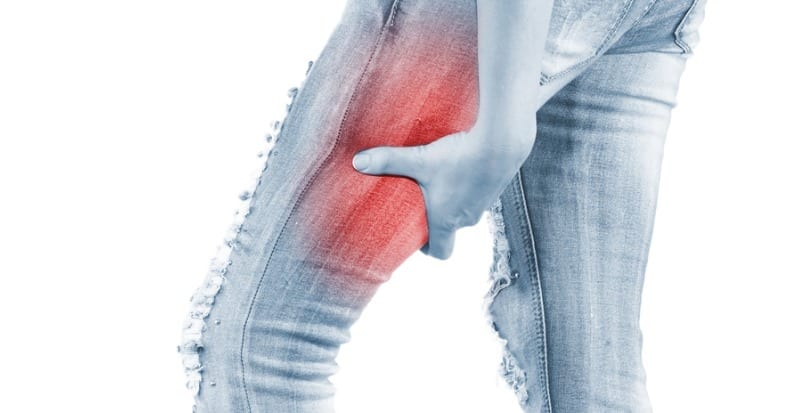Chronic hamstring strains are more difficult to diagnose because the pain (in the hip region and deep in the buttocks and upper thigh) comes on gradually and is aggravated by repetitive activities like running, rowing, or biking and worsens with prolonged sitting. Hamstring injuries become chronic when a damaged or torn tendon fails to properly heal, often caused by returning to the sport too quickly and/or from mismanagement. Chronic tendonitis can lead to degenerative changes resulting in a weaker tendon, which can lead to long-term pain and disability.
Non-surgical care for chronic high hamstring tendinopathy is often challenging because the usual treatment approaches for acute hamstring strains are less responsive. It’s not unusual for a prolonged recovery of three to six months, with many only partially recovering with a high recurrence rate. Treatment may include:
- Rest (time away from a sport), though cross training of a different body region during this time can combat the psychological stress associated with chronic injuries.
- Ice and heat (ice packs, baths, and ice massage is initially recommended to reduce pain and inflammation) applied for ten to twenty minutes, every two to four hours each day. Contrast therapy includes alternating between ice and heat to create a “pump” as heat vasodialates blood vesicles and draws in fluids, which loosens fibrotic scar tissue and relaxes muscles, while ice vasoconstricts and pushes out fluid (inflammation).
- Because lack of flexibility is “the norm” for chronic high hamstring tendinopathy, regular stretching will be necessary for recovery. Stretches can include lying on the back, pulling the bent knee toward the chest, and slowly straightening the knee; the popular “hurdler” stretch, or sitting with one leg straight on a bench or ground and slowly trying to lock the knee straight while reaching for the toes; or from standing, placing the heel on a chair seat followed by an anterior pelvic tilt (arch the low back by tilting the buttocks upwards).
- A mix of concentric (resistance as the muscle shortens, such as bringing the heel toward the buttocks) and eccentric (resistance during the opposite of concentric or the straightening of the knee during a hamstring curl) strengthening exercises will typically benefit patients with chronic high hamstring tendinopathy.
Your doctor of chiropractic can guide you in the treatment process as well as address musculoskeletal issues, such as low back pain, that may have preceded the hamstring injury. As is typical with musculoskeletal injuries, the sooner a patient seeks care, the more likely they will achieve a satisfactory treatment outcome.
